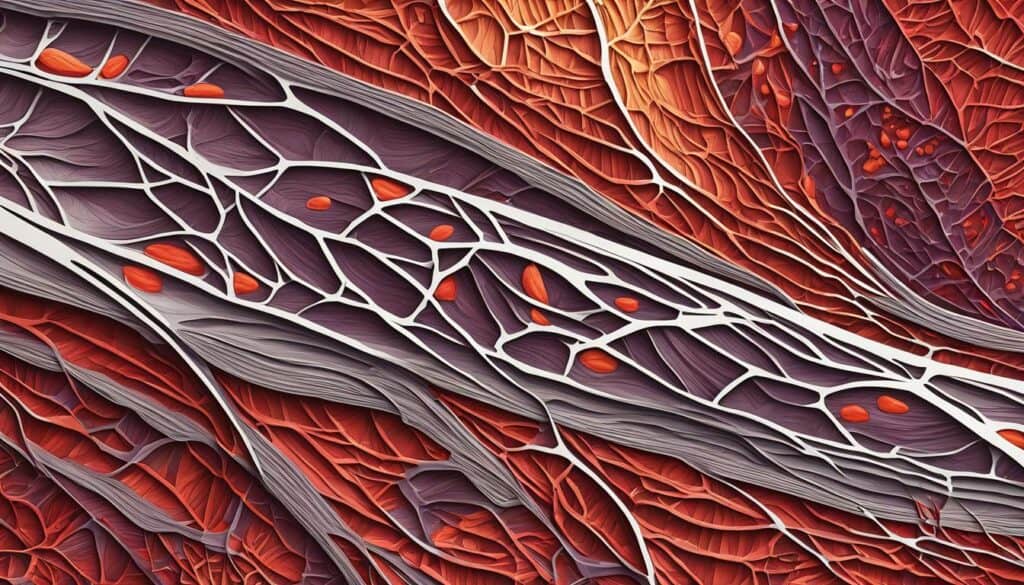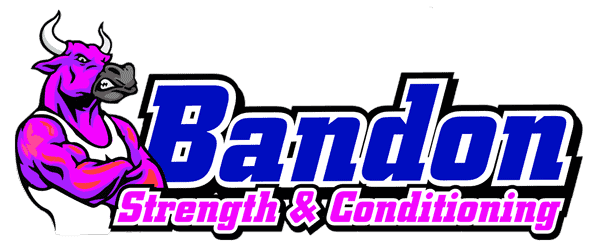Welcome to our comprehensive guide on the science of muscle recovery and the best practices for optimizing your recovery. Whether you’re an athlete, fitness enthusiast, or simply want to recover effectively after a workout, understanding the science behind muscle recovery is essential for achieving your fitness goals.
Muscle recovery is the process in which your muscles repair and regenerate after exercise. It involves various physiological mechanisms that contribute to reducing muscle soreness, promoting muscle repair, and facilitating overall recovery. To make the most out of your recovery period, it’s important to implement effective techniques and strategies tailored to your individual needs.
In this article, we will look into the impact of different recovery techniques on muscle recovery. We’ll explore the science behind muscle soreness, recovery time, muscle repair, and muscle regeneration. Furthermore, we’ll provide practical tips on muscle recovery exercises, muscle recovery techniques, and muscle recovery supplements that can help optimize your recovery process.
Key Takeaways:
- Understanding the science behind muscle recovery is crucial for optimizing your recovery.
- Implementing effective techniques and strategies can help reduce muscle soreness and promote muscle repair.
- Exercises and techniques like massage, compression garments, and active recovery can aid in the muscle recovery process.
- Choosing the right muscle recovery supplements can support your recovery and enhance performance.
- Every individual’s recovery needs are unique, so it’s important to tailor your approach to meet your specific requirements.
Understanding Exercise-Induced Muscle Damage
Exercise-induced muscle damage occurs when we generate small amounts of damage to the muscle fibers during workouts. This leads to histopathological muscle tissue changes and muscle soreness, also known as delayed onset muscle soreness (DOMS). The level of pain experienced after a workout does not always directly correlate with the amount of muscle damage. Pain is subjective and varies from person to person.
Muscle damage can be measured by comparing force production during a workout and 24 to 48 hours afterwards. Lower force production after a workout indicates more muscle damage. Muscle damage is also indicated by changes in the blood concentrations of muscle damage indicators such as creatine kinase (CK) and inflammatory biomarkers such as C-reactive protein (CRP) and interleukin-6 (IL-6).
To understand the muscle building process, it’s important to recognize that exercise-induced muscle damage is a natural consequence of challenging workouts. When we push our muscles to their limits, microscopic tears occur within the muscle fibers. These tears then stimulate the body’s repair and rebuilding processes, resulting in the development of stronger and more resilient muscle tissue.
Exercise-induced muscle damage is a necessary part of the muscle building process. It’s an indication that we’ve pushed our muscles to adapt and grow stronger. Embrace the discomfort as a sign of progress and know that the soreness will subside as your muscles repair and regenerate.
However, while exercise-induced muscle damage is a crucial part of the muscle building process, excessive or prolonged muscle damage can hinder performance and impede recovery. It’s important to strike a balance between challenging workouts and sufficient recovery time to optimize muscle growth and minimize the risk of injury.
The Role of Muscle Soreness
Muscle soreness is an inevitable result of exercise-induced muscle damage. It typically manifests as stiffness and discomfort in the affected muscles, peaking within 24 to 72 hours after a workout. While muscle soreness may be uncomfortable, it doesn’t necessarily indicate the severity of muscle damage or the effectiveness of your workout.
It’s important to note that muscle soreness is a temporary condition and gradually subsides as the muscles repair and adapt. Incorporating recovery techniques such as foam rolling, stretching, and massage can help alleviate muscle soreness and improve overall recovery.
Recognizing Muscle Damage Indicators
In addition to muscle soreness, several indicators can help determine the extent of exercise-induced muscle damage. These indicators include:
- Changes in force production: Lower force production during subsequent workouts can be a sign of ongoing muscle damage.
- Elevated creatine kinase (CK) levels: Creatine kinase is an enzyme that leaks into the bloodstream when muscle fibers are damaged. Elevated CK levels indicate muscle damage.
- Inflammatory biomarkers: Inflammatory markers such as C-reactive protein (CRP) and interleukin-6 (IL-6) can indicate muscle damage and the body’s inflammatory response to repair the damaged tissue.
Monitoring these indicators can provide valuable insights into the extent of muscle damage and help adjust training intensity and recovery strategies accordingly.

The Importance of Optimal Muscle Recovery
Optimal muscle recovery is essential for athletes to prevent maladaptation to the accumulated stresses induced by training. Training and competition involve repeated eccentric contractions and muscle vibrations, which can lead to muscle damage, inflammation, delayed onset muscle soreness (DOMS), increased fatigue, and an elevated risk of injury.
These exercise-induced perturbations can cause a temporary reduction in muscular force, decreased physical performance, and a heightened susceptibility to injuries. Coaches and sports scientists play a crucial role in optimizing the recovery period to manage muscle damage, alleviate DOMS, reduce inflammation and fatigue, and decrease the risk of injury.
A brief duration between training sessions may not be sufficient for complete recovery. Therefore, employing effective recovery techniques becomes paramount in restoring muscle function and preparing the body for subsequent training sessions and competitions.
The Impact of Training Load on Muscle Recovery
Training load refers to the volume and intensity of training that an athlete endures. It is a critical determinant in the muscle recovery process. Higher training loads can lead to increased muscle damage, fatigue, and impaired recovery. Conversely, lighter training loads allow for better recovery and adaptation.
“Finding the right balance between training load and recovery is crucial for athletes to avoid overreaching, overtraining, and maladaptation,” explains Dr. Sarah Williams, a sports scientist at the University of Oxford.
The Role of Recovery Techniques in Muscle Recovery
Various recovery techniques have been proposed to improve muscle recovery after exercise. These techniques aim to manage muscle damage, alleviate DOMS, reduce inflammation, and combat fatigue. Some effective recovery techniques include:
- Massage: Massage has been found to reduce muscle soreness and promote relaxation and recovery.
- Compression Garments: Wearing compression garments can enhance blood flow, reduce swelling, and improve muscle recovery.
- Water Immersion: Immersing the body in cold water or contrast water therapy can help reduce inflammation and promote recovery.
- Cryotherapy: Exposing the body to cold temperatures through cryotherapy can alleviate muscle soreness and facilitate recovery.
- Stretching: Incorporating stretching exercises into a post-workout routine can improve flexibility and aid in muscle recovery.
- Active Recovery: Engaging in low-intensity exercise after intense training sessions can enhance blood flow and promote recovery.
Implementing a combination of these techniques based on individual needs and preferences can optimize the muscle recovery process and reduce the risk of injuries.

| Benefits of Optimal Muscle Recovery | Risks of Inadequate Recovery |
|---|---|
|
|
Optimizing muscle recovery is not only crucial for athletes to perform at their best, but it also plays a vital role in preventing injuries and maintaining long-term physical health. By prioritizing recovery techniques and allowing sufficient time for the body to recuperate, athletes can enhance their performance, reduce the risk of injuries, and achieve their training goals.
Exploring Different Muscle Recovery Techniques
When it comes to muscle recovery, athletes have a range of techniques at their disposal to enhance the process. Recovery interventions play a vital role in optimizing performance and promoting overall well-being. Let’s delve into some of the most effective muscle recovery techniques:
Compressive Techniques
Compressive techniques, such as massage, compressive garments, and water immersion, are popular choices for athletes looking to reduce swelling and inflammation. Massage helps improve blood circulation, while compressive garments provide targeted compression to specific muscle groups. Water immersion, in the form of ice baths or contrast water therapy, can help reduce inflammation and promote recovery.
Electrostimulation
Electrostimulation, also known as electrical muscle stimulation (EMS), is a technique that uses electrical impulses to stimulate muscle contraction. This method helps enhance muscle activation, promoting recovery and performance. EMS devices are commonly used by athletes to target specific muscle groups and aid in muscle recovery.
Stretching
Stretching not only improves flexibility but also plays a crucial role in muscle recovery. By incorporating stretching exercises into your routine, you can enhance blood flow to the muscles, reduce muscle tension, and alleviate post-workout soreness. Dynamic stretching, static stretching, and proprioceptive neuromuscular facilitation (PNF) stretching are all effective techniques for promoting muscle recovery.
Cryotherapy
Cryotherapy involves exposing the body to extremely cold temperatures, which can aid in reducing pain and inflammation. Cold-induced vasoconstriction helps minimize swelling and promotes faster recovery. Cryotherapy methods include ice packs, cold showers, and whole-body cryotherapy chambers.

Active Recovery
Active recovery refers to engaging in light physical activity to promote blood flow and circulation without causing additional stress to the muscles. Activities such as low-intensity cycling, swimming, or yoga can help increase oxygen and nutrient delivery to the muscles, facilitating the recovery process.
Each muscle recovery technique mentioned targets specific aspects of the recovery process and has unique mechanisms of action. It is crucial to evaluate individual needs and specific training goals when selecting the most suitable techniques. Consulting with a sports therapist or trainer can provide valuable guidance in determining the best muscle recovery interventions for optimal performance.
The Effectiveness of Ice Baths for Muscle Recovery
Ice baths have become popular among athletes as a recovery method. The prolonged exposure to cold temperatures is believed to reduce muscle swelling and pain associated with muscle damage. However, the effectiveness of ice baths for muscle recovery is still debated.
Some studies show that ice baths can provide a reduction in perceived pain, while others suggest that the reduction in swelling may hinder the recovery process.
“Ice baths have been an integral part of my recovery routine for years. The cold immersion helps me feel refreshed and relieves any muscle soreness I may have after intense workouts.” – Sarah Anderson, professional athlete
The research on ice baths is mixed, and the amount of pain relief provided may be attributed to the placebo effect. It is important to consider individual preferences and training goals when deciding to use ice baths as a muscle recovery technique.
- Ice baths can effectively reduce perceived pain.
- Ice baths may hinder the recovery process by reducing swelling.
- Individual preferences and training goals should be considered when using ice baths.
Summary of the Effectiveness of Ice Baths for Muscle Recovery
| Pros | Cons |
|---|---|
| Reduces perceived pain | May hinder the recovery process by reducing swelling |
Overall, ice baths have the potential to provide pain relief and aid in muscle recovery. However, individual experiences may vary, and it is important to consider the potential drawbacks of reduced swelling. Athletes should experiment with different recovery techniques and consult with professionals to determine the most effective approach for their specific needs.
The Role of Foam Rollers in Muscle Recovery
Foam rollers are commonly used by athletes for self-myofascial release to relieve muscle soreness and improve range of motion. The pressure applied on the fascia is believed to relax tight muscles and promote muscle recovery.
“Foam rolling is a great tool for athletes to incorporate into their recovery routine. It allows them to target specific muscles and release tension, helping with muscle soreness and enhancing overall performance,” says Dr. Jane Mitchell, a sports physiotherapist.
However, the research on the effectiveness of foam rollers in muscle recovery is inconclusive. Some studies do not show any positive benefits of foam rolling on performance during the recovery process. It is important to note that individual responses may vary.
A recent study published in the Journal of Sports Sciences investigated the effects of foam rolling on delayed onset muscle soreness (DOMS) and found mixed results. While some participants reported a reduction in muscle soreness, others did not experience any significant change.

The Effectiveness of Foam Rollers for Muscle Recovery
To better understand the effectiveness of foam rollers in muscle recovery, here are some key points to consider:
- Foam rolling can potentially help relieve muscle soreness by breaking up adhesions and increasing blood flow to the muscles.
- Some athletes find foam rolling to be an effective method for improving range of motion and flexibility.
- Studies have shown that foam rolling may not have a significant impact on muscle performance immediately after a workout.
- There is limited research on the use of vibrating foam rollers for muscle recovery. While some athletes find them beneficial, more studies are needed to determine their effectiveness.
It is important to note that foam rolling should not replace other proven muscle recovery techniques, such as proper rest, nutrition, and stretching. It can be used as a complementary tool to enhance the recovery process.
| Benefits of Foam Rollers for Muscle Recovery | Potential Limitations of Foam Rollers for Muscle Recovery |
|---|---|
|
|
While foam rolling can be a useful tool in the muscle recovery process, it is important to listen to your body and consult with a healthcare professional or sports therapist if you have any specific concerns or pre-existing injuries.
By incorporating foam rolling into a well-rounded muscle recovery routine that includes other proven techniques, athletes can optimize their recovery and improve their overall performance.
Compression Gear for Muscle Recovery
Compression gear, such as compression tights, has gained popularity among athletes as a method for enhancing muscle recovery. These specially designed garments apply graduated pressure, creating a compression gradient that promotes increased blood flow and reduces swelling. By improving blood circulation, compression gear aims to facilitate muscle recovery and enhance sports performance.
Various studies have been conducted to evaluate the effectiveness of compression gear in muscle recovery, yielding conflicting results. Some research suggests that compression garments can contribute to improved recovery and alleviate muscle damage. However, other studies find no significant benefits in terms of muscle recovery and performance.
The effectiveness of compression gear may vary depending on individual factors, including training status, muscle type, and age. Athletes should consider their personal needs and preferences when deciding to incorporate compression gear into their muscle recovery routine. It is important to note that compression gear is not a one-size-fits-all solution and may yield different outcomes for different individuals.
While the research on compression gear for muscle recovery continues to evolve, many athletes find that compression garments provide a sense of support and aid in facilitating recovery. It is advisable to try out compression gear during training sessions and observe how it impacts individual performance and recovery.
Benefits of Compression Gear:
- Increased blood flow and oxygen delivery to muscles
- Reduced muscle swelling and inflammation
- Potential relief from muscle soreness and fatigue
- Enhanced proprioception and joint stability
Compression gear creates a pressure gradient that can positively affect blood flow, thereby potentially aiding in muscle recovery and sports performance.
As the research on compression gear for muscle recovery continues to evolve, it is recommended that athletes consult with sports professionals and consider their specific needs before incorporating compression gear into their training routine. Personal experience and individual preferences are valuable factors to consider when determining the effectiveness of compression gear for muscle recovery.
| Study | Findings |
|---|---|
| Study 1 | Compression gear demonstrated significant improvement in muscle recovery and perceived fatigue reduction. |
| Study 2 | No significant difference in muscle recovery outcomes observed between compression gear and control groups. |
| Study 3 | Compression gear showed limited effects on muscle recovery, with no significant impact on blood markers of muscle damage. |
It is worth noting that results may vary based on the specific study design, participants, and other factors that can influence muscle recovery outcomes.
Whole Body Cryotherapy as a Muscle Recovery Method
Whole body cryotherapy involves exposing the body to extremely cold temperatures for a short period of time. This therapy has gained popularity as a muscle recovery method, similar to ice baths, due to its potential benefits in reducing muscle swelling and pain. However, the research on the effectiveness of whole body cryotherapy for muscle recovery is currently limited.
Some studies suggest that whole body cryotherapy may be more effective than traditional ice baths in reducing tissue temperature. Cold exposure has been known to constrict blood vessels, which may reduce blood flow to the muscles and decrease tissue temperature. This decrease in tissue temperature can potentially alleviate muscle soreness and aid in the recovery process.
However, the impact of whole body cryotherapy on muscle recovery and performance is still not fully understood. Further research is needed to determine its efficacy in promoting muscle recovery and enhancing athletic performance.
It is also important to consider the cost of whole body cryotherapy as a factor. This therapy can be expensive and may not be accessible to all individuals, especially recreational athletes or those on a tight budget.
Potential Benefits and Risks of Whole Body Cryotherapy
While whole body cryotherapy shows promise as a muscle recovery method, it is essential to consider the potential benefits and risks before incorporating it into a recovery routine. Here are some factors to consider:
| Benefits | Risks |
|---|---|
|
|
It is important to consult with a healthcare professional before undergoing whole body cryotherapy, especially if you have any pre-existing health conditions. They can provide guidance and determine if it is a suitable recovery method for you.
In summary, whole body cryotherapy is an emerging muscle recovery method that utilizes cold exposure to potentially aid in muscle recovery and reduce tissue inflammation. However, the research on its effectiveness is limited, and further studies are needed. It is crucial to consider the potential benefits and risks, as well as consult with a healthcare professional, before incorporating whole body cryotherapy into your recovery routine.
The Role of Nutrition in Muscle Recovery
Nutrition plays a critical role in supporting muscle recovery. Consuming the right balance of energy, nutrients, and liquids is essential for stimulating muscle anabolism and promoting effective recovery. By providing the body with the necessary building blocks, nutrition optimizes the repair and growth of muscles after intense physical activity.
Key Elements for Muscle Recovery:
- Proteins: Proteins are the building blocks of muscle tissue. They provide essential amino acids that aid in muscle repair and growth. High-quality sources of protein include lean meats, fish, eggs, dairy products, and plant-based options like legumes and tofu.
- Carbohydrates: Carbohydrates are the primary source of energy for the body during exercise. They replenish glycogen stores in muscles, facilitating muscle recovery. Complex carbohydrates like whole grains, fruits, and vegetables provide sustained energy and support optimal recovery.
- Amino Acids: Amino acids are the building blocks of proteins. Consuming both essential and non-essential amino acids promotes optimal muscle recovery. Foods rich in amino acids include meat, dairy products, soy products, nuts, and seeds.
- Antioxidants: Antioxidants help reduce oxidative stress caused by intense exercise. They protect the cells from damage and inflammation, supporting faster recovery. Foods rich in antioxidants include fruits, vegetables, nuts, and seeds.
- Dietary Supplements: In some cases, dietary supplements can help support muscle recovery. Common supplements include whey protein, branched-chain amino acids (BCAAs), creatine, and fish oil. It is advisable to consult a healthcare professional or sports nutritionist before incorporating any dietary supplements.
When designing a nutrition plan for muscle recovery, it is essential to consider the quantity, timing, and composition of each nutritional element. The specific needs of the individual, their training goals, and the type of physical activity should all be taken into account.

Fueling Your Muscles for Recovery:
Timing is crucial when it comes to nutrition for muscle recovery. Consuming a balanced meal or snack containing proteins and carbohydrates within the first hour after exercise helps kickstart the recovery process by replenishing glycogen stores and promoting muscle protein synthesis.
“By providing the body with the necessary building blocks, nutrition optimizes the repair and growth of muscles after intense physical activity.”
Example of a Post-Workout Recovery Meal:
| Macronutrient | Food Sources |
|---|---|
| Protein | Grilled chicken breast |
| Cottage cheese | |
| Carbohydrates | Brown rice |
| Sweet potatoes | |
| Fruits and Vegetables | Broccoli |
| Blueberries |
Note: The quantities and specific food choices may vary depending on individual preferences, dietary restrictions, and training goals.
The principle of sports specificity should guide nutritional choices for muscle recovery. Tailoring the nutrition plan to align with the type of physical activity and the individual’s goals will maximize the effectiveness of the recovery process.
Coach’s Influence on Athlete’s Eating Habits
The role of coaches in influencing athletes’ eating habits is crucial for achieving sporting success. Research has shown that coaches’ respectful and understanding behavior can positively impact athletes’ psychological and emotional well-being, self-esteem, and confidence.
Promoting healthy eating habits among athletes is essential, as psychological disorders such as anxiety, stress, and depression can directly influence their eating patterns, leading to unhealthy habits.
Creating a favorable social environment and implementing effective nutritional strategies can help athletes develop and maintain healthy eating habits. Coaches have a significant role to play in educating athletes about proper nutrition and promoting optimal health.
The Impact of Coaches’ Behavior
“A coach’s supportive and encouraging approach towards athletes’ eating habits can have a profound impact on their overall well-being and sports performance.” – Dr. Emma Collins, Sports Psychology Expert
A supportive and understanding coach can foster a positive relationship with athletes, allowing them to feel comfortable discussing their eating habits and seeking guidance on nutrition. By providing the right guidance, coaches can help athletes make informed choices about their diet, leading to improved performance on the field.
Nutritional Strategies for Athletes
Coaches can implement various nutritional strategies to support athletes in maintaining healthy eating habits and optimizing their sports performance. Some effective strategies include:
- Developing personalized meal plans based on individual athletes’ nutritional needs and training goals.
- Promoting the consumption of nutrient-dense foods, including lean proteins, whole grains, fruits, and vegetables.
- Encouraging athletes to stay hydrated by consuming an adequate amount of fluids, especially during training and competition.
- Emphasizing the importance of pre- and post-workout nutrition to support muscle recovery and enhance performance.
- Providing education on portion control and mindful eating to prevent unhealthy eating habits.
By incorporating these strategies into their coaching approach, coaches can cultivate a positive food culture within their teams and equip athletes with the knowledge and skills to make nutritious choices that support their sports performance.
The Coach’s Role in Building Social Skills
Coaches not only influence athletes’ eating habits but also play a vital role in developing their social skills. By promoting a positive team environment and encouraging open communication, coaches can create a supportive atmosphere where athletes can discuss their nutrition-related concerns without judgment or stigma.
“A coach’s ability to create a safe space for dialogue about nutrition can empower athletes to make healthy choices and develop a positive relationship with food.” – Dr. Sarah Thompson, Sports Nutritionist
Effective communication and active listening skills are essential for coaches to understand each athlete’s unique nutritional challenges and provide appropriate guidance. This approach fosters a sense of trust and enables athletes to develop healthy eating habits that support their overall well-being and sports performance.
The Integration of Sports Performance and Nutrition
Coaches must understand the relationship between sports performance and nutrition to effectively support their athletes. By recognizing that proper nutrition fuels performance and aids in muscle recovery, coaches can enhance the understanding of its importance within their teams.
Moreover, coaches should collaborate with qualified sports nutritionists or dietitians to obtain the latest evidence-based information on sports nutrition. This partnership ensures that athletes receive accurate and individually tailored advice, increasing the likelihood of achieving their performance goals.
Ultimately, a coach’s commitment to prioritizing athletes’ nutritional needs and fostering a positive food environment can have a profound impact on their overall well-being, sports performance, and long-term health.
Wrapping up
Optimizing muscle recovery is essential for athletes aiming to enhance their performance and overall well-being. The choice of recovery techniques should be based on individual needs, personal preferences, and training goals. Different methods such as massage, compression gear, and ice baths can be effective, but their effectiveness may vary from person to person. It is important to find the most suitable techniques that work best for you.
Nutrition also plays a crucial role in muscle recovery. Athletes should focus on consuming adequate energy, nutrients, and liquids to promote muscle repair and regeneration. By optimizing their nutritional intake, athletes can support their recovery process and maximize its effectiveness. It is recommended to follow the principle of sports specificity when designing a nutrition plan for muscle recovery.
By incorporating best practices for muscle recovery, athletes can optimize their performance and minimize the risk of injuries. It is important to prioritize individual needs, listen to your body, and make informed decisions about the recovery techniques and nutrition strategies that work best for you. Remember, every athlete is unique, and finding the right approach to muscle recovery is a continuous process of experimentation and refinement.
FAQ
What is muscle recovery?
Muscle recovery refers to the process that occurs after physical exercise, where the muscles repair and regenerate themselves. It is essential for reducing muscle soreness, optimizing performance, and preventing injuries.
How long does it take for muscles to recover?
The recovery time for muscles can vary depending on factors such as the intensity and duration of the exercise, individual fitness level, and the type of recovery techniques employed. Generally, it takes about 24 to 48 hours for muscles to recover completely.
How can I reduce muscle soreness after a workout?
To reduce muscle soreness after a workout, you can try various recovery techniques such as massage, stretching, using foam rollers, and applying ice packs to the affected area. Additionally, staying hydrated, consuming anti-inflammatory foods, and getting enough sleep can also help in reducing muscle soreness.
Do muscle recovery supplements work?
Muscle recovery supplements can be effective in aiding muscle repair and reducing inflammation. Some commonly used supplements include protein powders, branched-chain amino acids (BCAAs), and omega-3 fatty acids. However, it is important to consult with a healthcare professional before starting any supplement regimen.
Can I exercise during the recovery period?
Yes, incorporating active recovery exercises, such as low-intensity cardio or light stretching, can help promote blood flow and aid in muscle recovery. However, it is essential to listen to your body and avoid intense workouts that may hinder the recovery process.
Are there any specific exercises that can help with muscle recovery?
Yes, some exercises that can aid in muscle recovery include yoga, swimming, cycling, and walking. These low-impact exercises help improve blood circulation, reduce muscle soreness, and promote overall muscle regeneration.
Are there any risks associated with muscle recovery techniques?
While most muscle recovery techniques are generally safe, it is important to use caution and follow proper guidelines. For example, applying ice packs directly to the skin for prolonged periods can lead to frostbite. It is advisable to seek guidance from a healthcare professional or certified trainer before trying any new recovery technique.
How does nutrition impact muscle recovery?
Nutrition plays a crucial role in muscle recovery by providing the necessary energy, nutrients, and hydration for effective repair and regeneration. Adequate consumption of proteins, carbohydrates, and antioxidants can help speed up the recovery process and optimize muscle growth.
Can muscle recovery techniques help prevent injuries?
Yes, proper muscle recovery techniques can help reduce the risk of injuries by aiding in muscle repair and minimizing inflammation. By optimizing recovery, athletes can ensure that their muscles are adequately prepared for subsequent workouts or competitions, reducing the chances of overuse or acute injuries.
How can a coach influence an athlete’s eating habits?
Coaches can positively influence an athlete’s eating habits by educating them about proper nutrition, creating a supportive social environment, and implementing effective nutritional strategies. By promoting healthy eating habits, coaches can enhance an athlete’s performance, well-being, and overall sports success.



